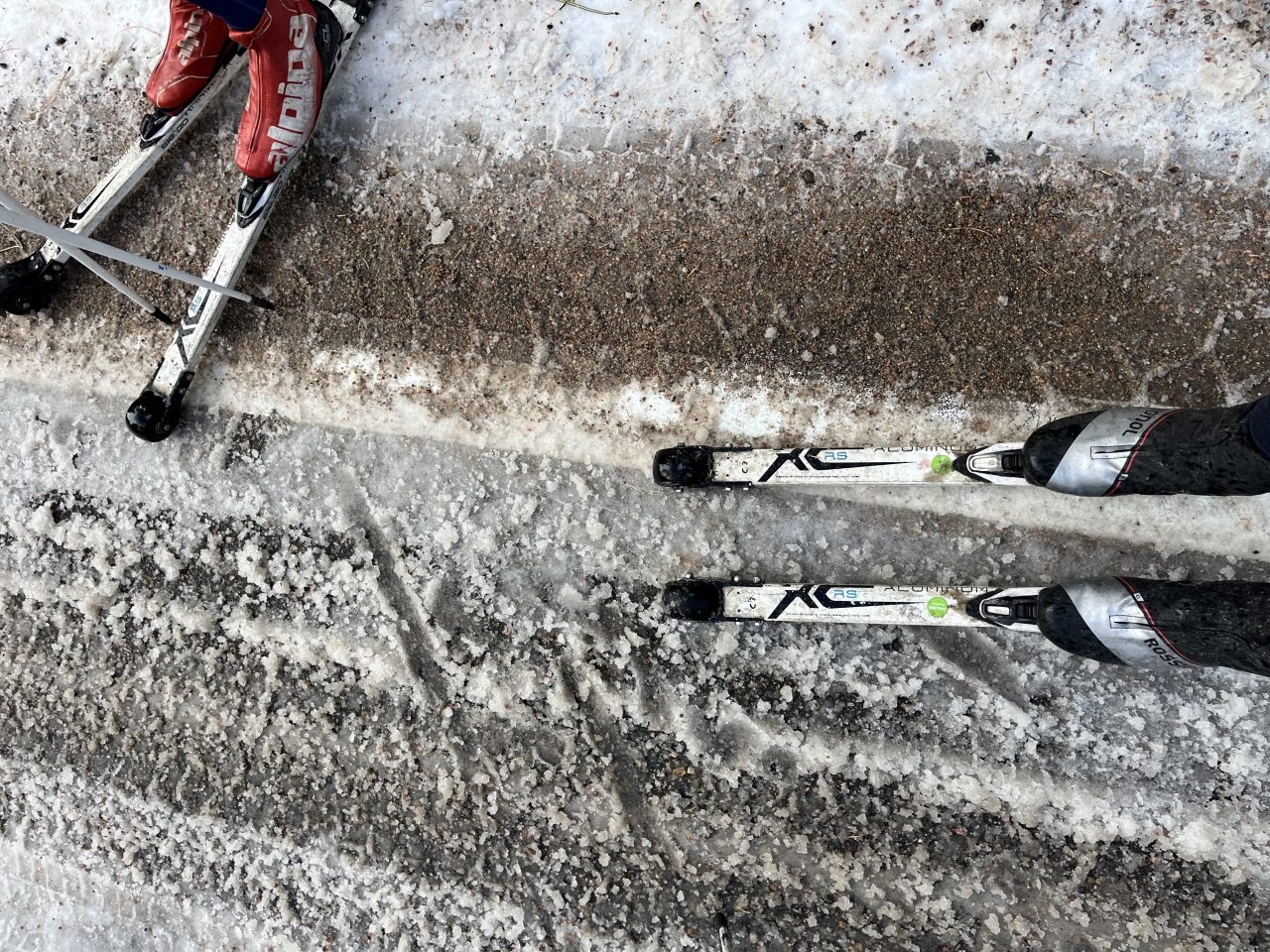Our bodies are very good at adapting to change, as long as it comes slowly enough. That first frosty day in autumn always feels brutally cold. Take the same temperature in March and we’re in shorts and short sleeves. Our response to exercise load is no different. Taken as a slow and progressive build up, our bodies will respond with increased strength and capacity to stay on the right side of the load vs tolerance equation. But when it comes on too quickly–too much too soon–our bodies tend to complain.

The first day on snow is a highlight of every season. Long hours of sweat in the summer sun finally bear fruit with that ephemeral glide of skis on snow. We’ve finally escaped the harsh pounding of running, the clack of rollerski poles on pavement, the constant threat of distracted drivers in 4000 pound death machines hunting you on the road bike (apologies for the drama). It’s definitely easy to get carried away. Before we know it those first giddy strides have turned into a three hour ski when you only packed food and water for any hour. Best case scenario, you’re a bit sore for a couple of days. Worst case, you’ve irritated or injured something that could derail your whole ski season.
The obvious solution is to progress slowly. For those fortunate enough to have easy access to ski tracks, this takes some self control but is very doable. For those who are not able to get on snow frequently enough to have a progressive build, it’s going to take more prep work to ensure that your body is ready for you to go full gas as soon as the skis hit the snow.
If you’ve been rollerskiing, you definitely have a head start. But rollerskiing is not snow skiing. Snow will present different challenges, and therefore different loads on the body. Classic striding is more nuanced and often requires more work to set the kick than simply relying on ratcheted wheels. Pole plants, while nice and quiet, lack the snappy feedback as the snow compresses under the basket (and maybe let you get away with low hands on initiation without the tell tale skid of pole tips on pavement). Balance on the glide ski is now subject to variations in terrain, snow characteristics, and especially grooming quality.

If you haven’t been rollerskiing (I don’t blame you), it’s likely that your arms haven’t seen much load over the summer. Your legs have probably been the focus with running, cycling, and hiking. But these are very straight line motions—fine for classic skiing but not the best prep for the lateral demands of skating.
Ideally you’ve been doing strength training, ski specific drills, and stability work all summer. If not, this article is your friendly reminder that it’s not too late to get yourself ready. If you are a Faster Skier regular (thank you!), then you’ve likely come across some of my previous articles and hopefully you’ve incorporated the associated exercises into your regular “pay to play” maintenance workouts. Here are some highlights which are particularly appropriate to this conversation:
Single leg stability and balance: In Good Standing – Fundamental Elements of Ski Stance
Lateral hip strength: Go Sideways for Strong Skating Hips
Reinforcing the big toe: An Ode to the Big Toe
Shoulder health: Building a Better Skier Part 4: The Shoulder
Higher level dynamic exercises: Adding Power to the Push Off: Understanding the Rate of Force Development
So what does a “slow progression” on snow look like? A good example is what the Sifel US Cross Country Ski Team calls The Pace Project. As a tool for race prep, the goal is to ski repeats on a (typically) 5k loop with subtle changes in effort, subtechnique/gearing, nutrition, etc in order to learn the best recipe for repeatedly clocking your fastest times. As an early season, toe in the water vs head-first dive kind of progression, the goal would be to ski the loop (or whatever strip of snow you may have) at a pace where your time, perceived effort, and heart rate stay fairly consistent lap after lap. If your heart rate, perceived effort, and time are all going up, you’re overcooking it and not sticking to the plan. If effort and heart rate are consistent but you’re getting slower, it’s unlikely that you’re burning all of your matches, but your technique is starting to suffer. This might be a good time to take a step back and re-focus on technique. The idea is to ski in control–not necessarily easy, but under a sustainable effort for the duration. If you’re counting laps, look to add a lap every few sessions on snow. The general guidance is frequency before duration before intensity. If increasing frequency isn’t an option, then definitely build up duration prior to adding high intensity.

When dryland prep and on-snow progression have been combined, the body should be able to stay ahead of the load and tolerate the transition smoothly. Glitches definitely happen and shouldn’t be ignored. However, a niggle or small amount of pain that subsides within a few hours is unlikely to represent a concerning injury. If the pain keeps occurring, if it becomes moderate or severe, or if that mild pain is lasting into the next day, it’s a good idea to take some relative rest and seek the help of a physical therapist (ideally one who knows the specific demands of Nordic skiing).
Now go do some balance exercises, a snow dance or two (afterall, dancing has been shown to decrease back pain with skiing), and don’t forget to scrape the storage wax off your skis!
Ned Dowling
Ned lives in Salt Lake City, UT where his motto has become, “Came for the powder skiing, stayed for the Nordic.” He is a Physical Therapist at the University of Utah and a member of the US Ski Team medical pool. He can be contacted at ned.dowling@hsc.utah.edu.



